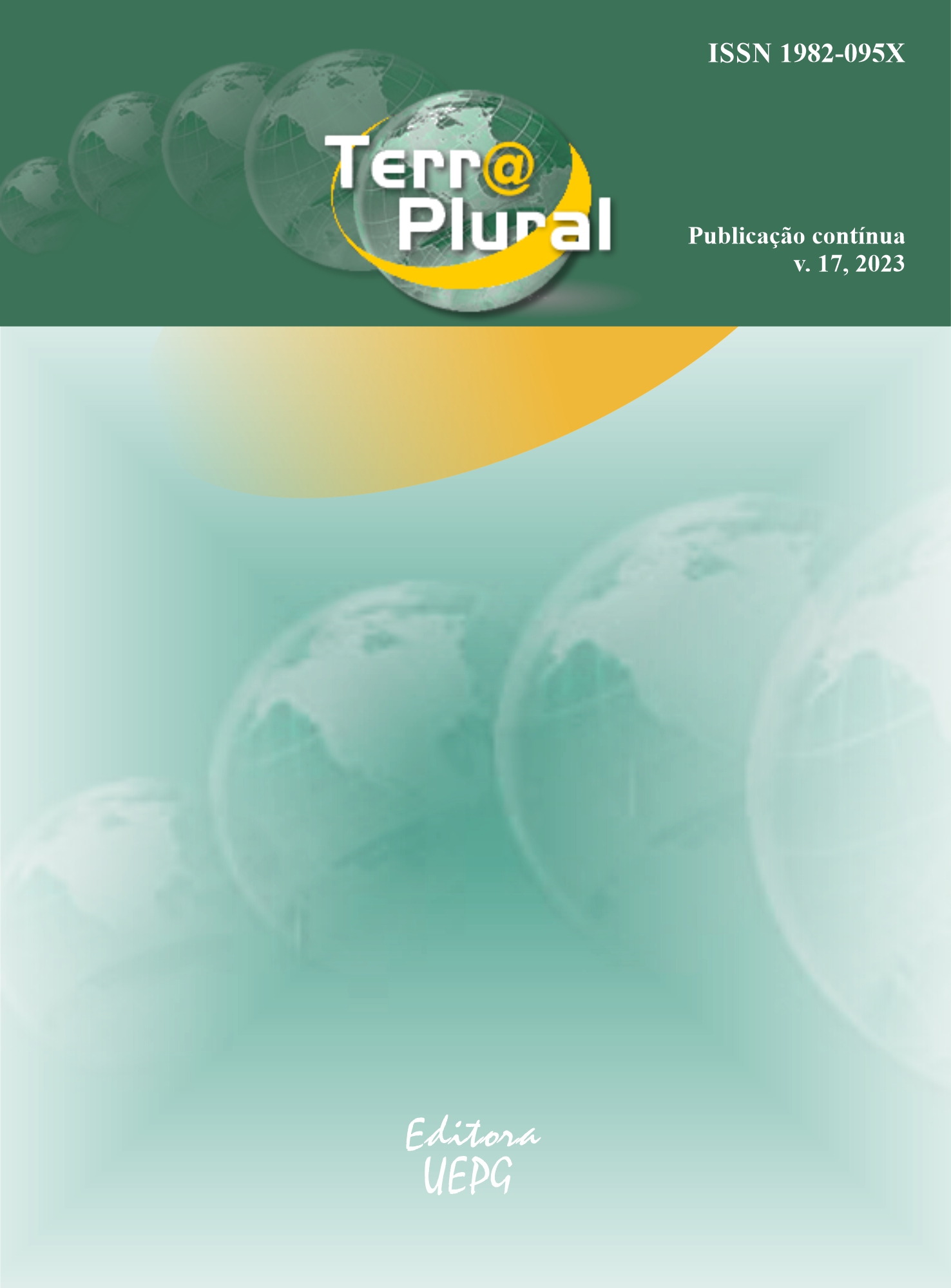Aplicación de la Teledeteccción al análisis de cambios de la vegetación de pastizales de altitud del ‘Pantanal’ (Brasil) utilizando datos multitemporales Landsat
DOI:
https://doi.org/10.5212/TerraPlural.v.17.2321497.003Palabras clave:
Vegetación de montaña, Hábitats naturales, Conservación, Monitoreo de EcosistemasResumen
Debido al clima frío y la altitud, identificar las tendencias dinámicas de la vegetación y los principales factores que contribuyen a los cambios en la cobertura vegetal en las áreas de Campos de Altitud es fundamental para comprender el cambio climático en las regiones montañosas. Las imágenes Landsat-8 OLI y Landsat-1 MSS de 1973 a 2022 de Morraria do Urucum y Serra do Amolar fueron preprocesadas en la plataforma de nube GEE y QGIS. Se utilizó el método de remuestreo por píxel en la escala de valores definida para la vegetación Campos de Altitud para mostrar los cambios en la cobertura vegetal y su dinámica a través del índice NDVI. En ambas áreas de estudio, se observó una tendencia continua de reducción significativa de la vegetación en los pastizales de altura durante 50 años. La disminución promedio fue de 49% para Urucum (menos 2.164 hectáreas) y 43% para Amolar (menos 3.959 hectáreas). El uso de GEI para obtener datos de teledetección combinados con el análisis de imágenes temporales ofrece el potencial de percibir rápidamente las tendencias en el cambio de la cubierta vegetal a gran y pequeña escala.
Descargas
Descargas
Publicado
Cómo citar
Número
Sección
Licencia
Derechos de autor 2023 Dhonatan Diego Pessi, Normandes Matos da Silva, Camila Leonardo Mioto, Domingos Sávio Barbosa, Rodrigo Martins Moreira, Mateus Antonio Gums Gomes, Alfredo Marcelo Grigio, Vinicius de Oliveira Ribeiro, Marco Antonio Diodato, Antonio Conceição Paranhos Filho

Esta obra está bajo una licencia internacional Creative Commons Atribución-NoComercial-SinDerivadas 4.0.
La revista Terr@ Plural retendrá el copyright de los trabajos publicados. Los derechos tienen referencia con la publicación del trabajo en cualquier parte del mundo, incluyendo los derechos a Las renovaciones, expansiones y diseminaciones de la contribución, así como otros derechos subsidiarios. Los autores tienen permiso para la publicación de la contribución en otra medio, materia impresa o digital, en portugués o en otra traducción, desde que los créditos tenidos sean dados a la Revista Terr@ Plural. Si permite el autoarchivo de los artículos publicados, en repositorios institucionales, temáticos o páginas webs personales en la versión pdf bajada del site de la revista.















